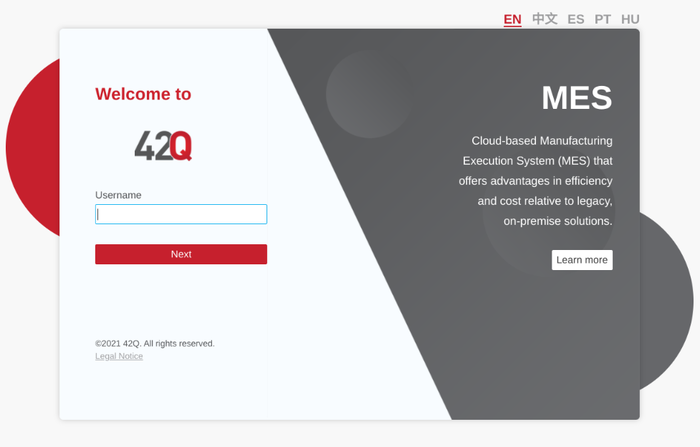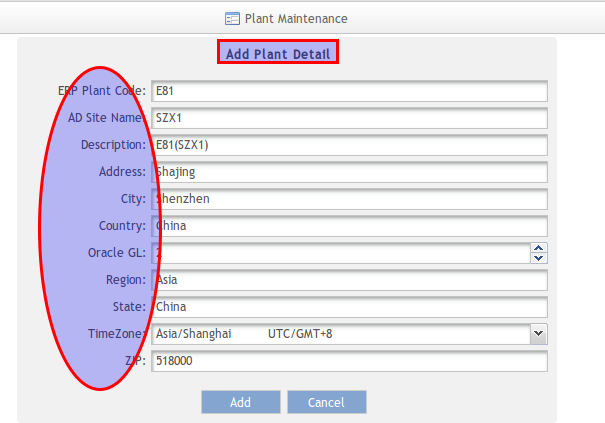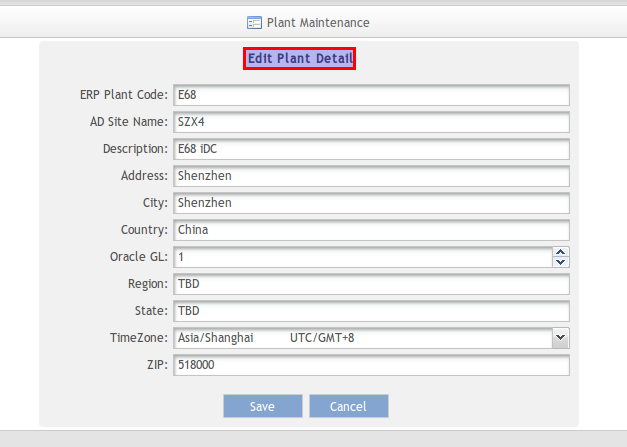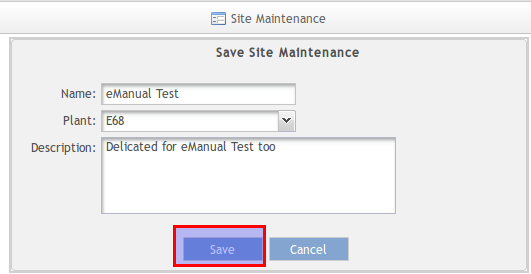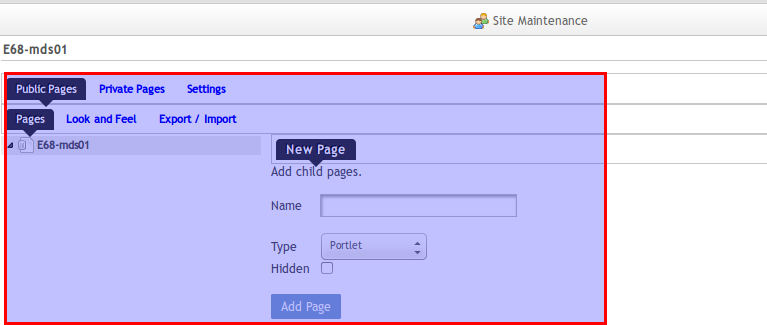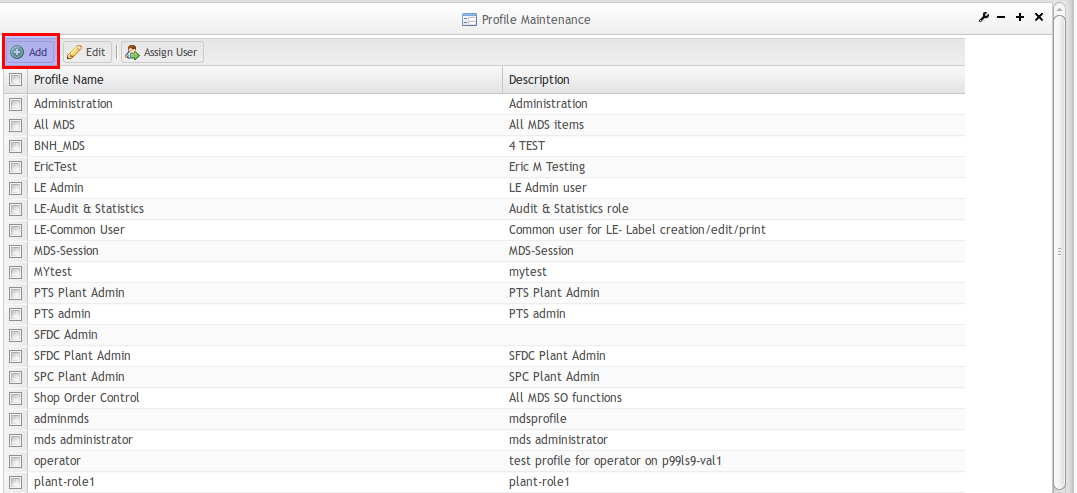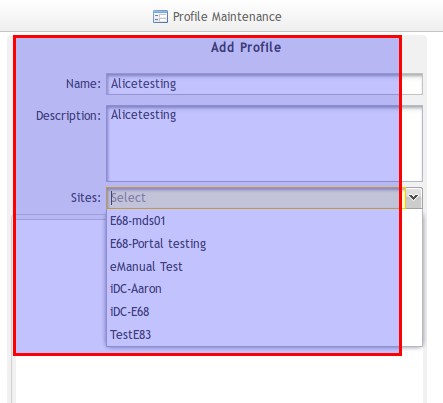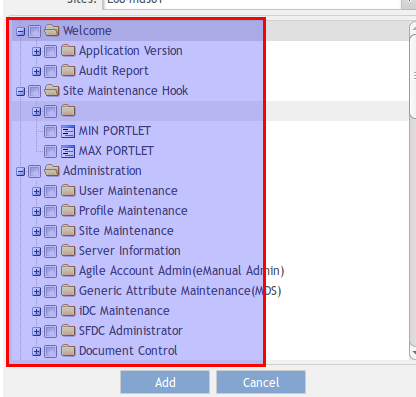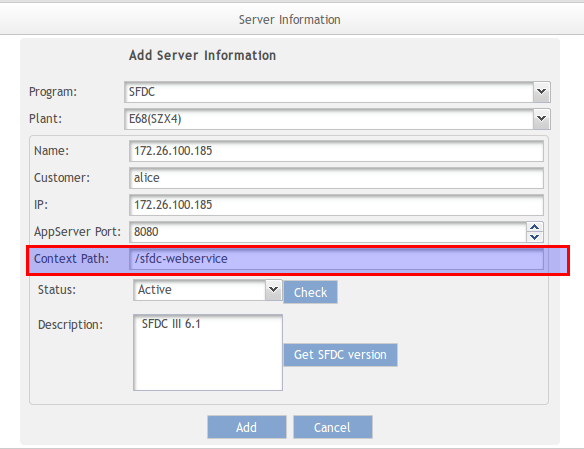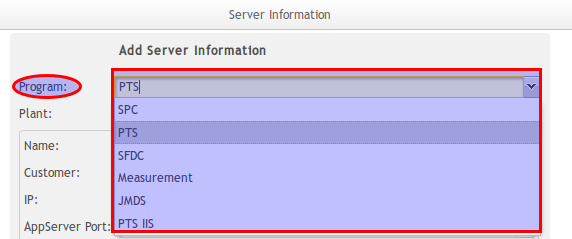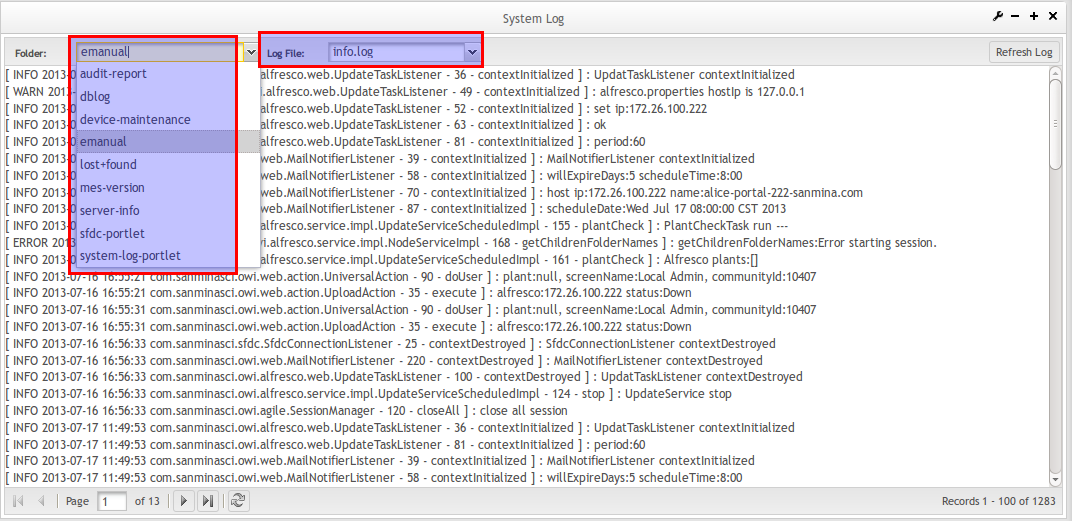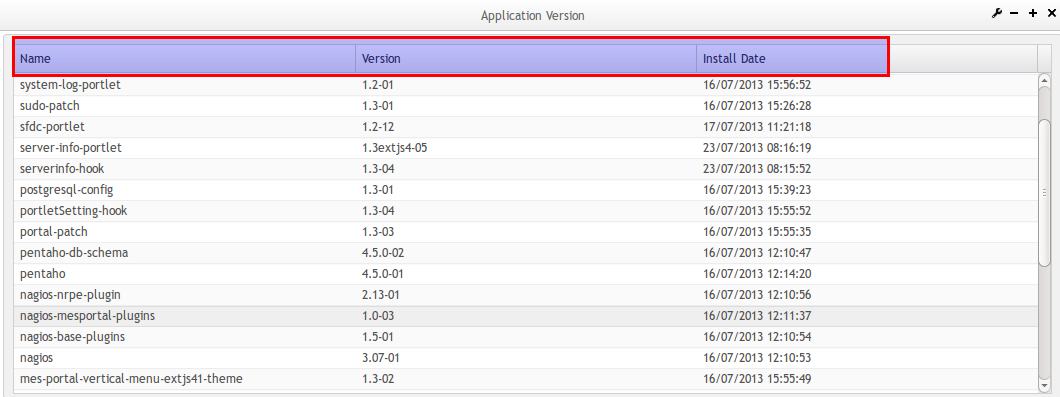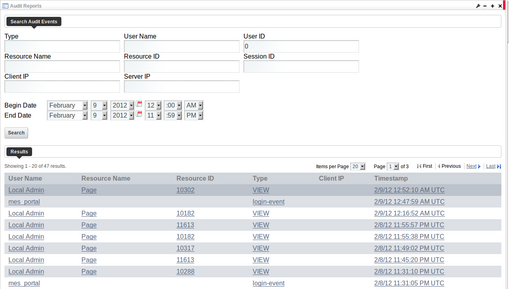Difference between revisions of "MES15 Portal 1.0 User Manual"
| Line 359: | Line 359: | ||
| | ||
| − | |||
| − | + | | |
| − | |||
Revision as of 20:22, 14 May 2021
42Q
Version MES15.69
This SOP is 42Q’s corporate standard.
This document is under revision control. The latest revision is located on Intranet.
Once printed it is an uncontrolled copy. All alterations to this work instruction require approval.
Contact the IT Global Education and Training Department to submit suggested alterations and or updates.
Contents
Introduction
This page covers common functionalities of the MES Portal, from how to log in, setup User Maintenance, Plant Maintenance, Site Maintenance, Profile Maintenance,System Log, Server Information, Audit Report, Application Version, and how to sign out the application, which is intended to guide administrators on how to manage and maintain local MES Portal, as well as to provide specific user groups a common sense of portal operation.
Accessing MES Portal
To access the MES Portal using the following URL:https://portal-uat.42-q.com the Welcome page will be shown as Figure 1 below describes.
Figure 1: Welcome Page
Note: The portal supports multi-languages as shown in the top right corner of the below image.
To log in, users must type their user_name and click Next, the screen will change and request the Password as Figure 2 shows.
- Enter valid Username and Password;
- Click on Sign In.
Figure 2: Password
MES Portal Overview
After signed in, the main menu of MES Portal will be activated. Refer to below figure Adminstrator Role (mes admin here refers to user account). Let's overview a little bit and pay attention to highlights in below figure:
- Red-framed: Several main changes while you log in MES Portal 1.3 in Administrator Role.
- MES15 Portal 1.0 at lower-right-corner
- Two parts of left menu bar: Welcome, drop-downpages:Application version, Audit Report and System Log. Administrator, drop-downpages: User Maintenance, Site Maintenance, Plant Maintenance andProfile Maintenance.
- Welcome Page: picture includes all the official welcome word according to different countries where deployed or will deploy MES Portal1.3
Notes: To different users, the modules displayed are different, which depends on the user roles in MES Portal.
Setup User Maintenance
This section covers how to import a LDAP user in MES Portal, including two portlets Import LDAP User and User Manager.
How to import LDAP user(admin only)
1. key in the user name will be imported, such as: mike_huang the syntax is:First Name_Last Name
2. press the search button.
3. Add the LDAP User or cancel to add.
4. The LDAP user is been imported and displayed on User Manager portlet.
Setup Plant Maintenance
This section covers how to perform plant maintenance in MES Portal, including how to create or maintain plants.
Clicking on the Plant Maintenance from vertical menu, the Plant Maintenance page will be displayed, refer to below figure:
Click on Add button to create a new plant detail. Refer to the figure below as an example.
If user wants to edit plant information, please select one plant first:
After selecting specified plant to edit:
Click Save to save modification, Otherwise Click Cancel to exit.
Once Plant detail had been saved successfully in Plant Maintenance,refer to the figure below:

Setup Site Maintenance
This section covers how to perform Site Maintenance in MES Portal, including how to add/edit a site, how to assign user to the site and manage site's page.
How to use site maintenance
First click Add highlighted with red panel in bottom right.

Add a site:
Click Add, the following page will appear:
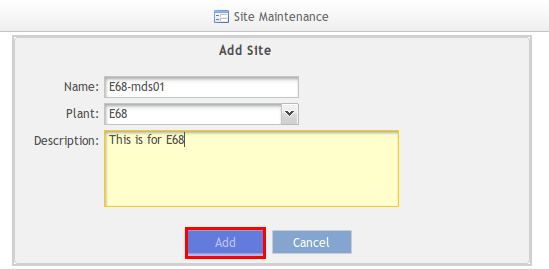
Name: stand for the name of the site. such asplant code + server: E68-mds01
Plant: Which plant that site is belong to. such as E68.
Description: stand for the description of the site.
Click Add to create a site or click Cancel to discard.
Edit a site
User can select one site to edit site's details.
Once selected, Click Edit, the following page will appear.
Click Save to effect modification or click Cancel to discard.
Assign User
Once E68-mds01 site is generated. Click the Assign User button to assign Alice Zhong into the site"E68-mds01".
Once selected, user can be assigned to this site:
Make sure the Site Admin checkbox is checked, Otherwise Alice Zhong can't add page and portlet for site E68-mds01.
Then, Click Save to effect the configuration or click Cancel to disacard.
Manage Pages
Admin user can create page and portlet for sites. Here's the step:
Then User create or import page or portlet.
A site must have at least page unless the site can't be displayed for the user to go to.
Setup Profile Maintenance
This section covers how to setup Profile Maintenance in MES Portal, including how to add/edit the role and assign user to the role.
Click the Profile Maintenance portlet. All the Roles will list out.
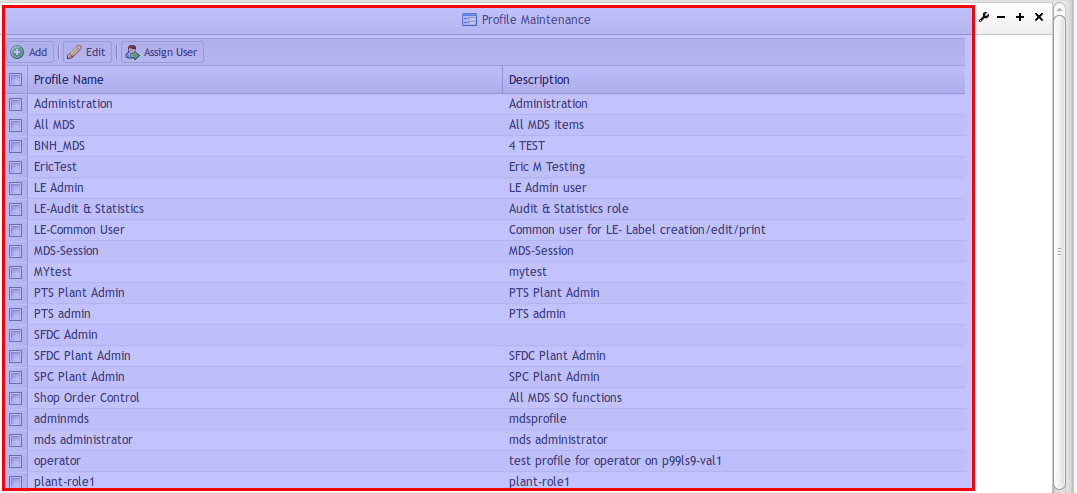
Add Role
Click the Add button in top right to create a new role.
Key in a Name for the role to be created. Fill in more details in Description field if possible. And select which Site that role is belong to. Such as E68-mds01.
Each action which belong to E68-mds01 are shown. For example, grant access of MDS and Server Information action to the role Alicetesting. Then click Add button at the bottom to save the roleAlicetesting.
Alicetesting role is saved successfully after clicking Add. Or user can click Cancel to exit.
Assign User
After selecting one role, click Assign User button to assign alice_zhong to this role.
Ps: Role is able to be edited by clicking on the Edit button.
Select Site, Click on alice_zhong and save it.
Click Save to take effect, and then click Back to profile maintenance portlet.
Server Information
This section covers how to add, edit and delete server info details of SFDC/SPC/PTS/JMDS to server information portlet.
How to use server Infomation Portlet (Admin only)
Through this portlet, Admin can add, edit and delete a server.
First click edit highlighted with red pane in Options.
To Edit or Delete a server info, please select one server and then click edit or delete.
Here please note that, if user wants to edit or delete a server, it is required to select one server first. Otherwise, the following message will promp up.
To add a server, please select add, then the following will appear. Here we'll take SFDC programe as an example.
Program:which program is applicated in the host.such as:SFDC Plant: Which plant the users belong to. such as:E68(SZX4)
Name: stand for the name of the host. such as:172.26.100.185
Customer:stand for Customer name that the host belong to. such as:alice
IP:stand for the internet protocol address. such as:172.26.100.185
AppServer Port:which internet port the host user. such as:8080
Context Path:to locate the program position in host address. such as:/sfdc-webservice
Status:stand for the status of the program applied in the host. such as:Active
Description:the version of the program applied in the host. such as:SFDC III6.1
Each program selected have different configuration, please refer to separeate application.
For PTS server info configuration, please refer to PTS User Guide (WIP, PTS Team will provide after server info configuration post to wiki)
For SPC server info configuration, please refer to Create SPC Server under SPC User Guide
For SFDC server info configuration, please refer to SFDC Admin under eManual User Guide
For Measurement server info configuration, please refer to Measurement Guide (TBD)
For JMDS server info configuration, please refer to MDS Guide (TBD)
For PTS IIS server info configuration, please refer to PTS IIIS User Guide (WIP, PTS Team will provide after server info configuration post to wiki)
System Log
This section covers display log of each applications in a portlet which include “info.log” “error.log” “tomcat” etc.
Select Log Folder and then Log file to display each application's log.
Application Version
This section covers what rpm packages included in current MES Portal 1.3 server by applicaiton name, application version and its install date.
Click on Application Versions.The following screen will appear. User can clearly know which application had been installed and its related information.
Audit Report
How to use Audit Report Portlet
Type:actions of user, such as:log-in/log-out
User Name:Screen name of user or last_name+first_name, such as:mike_huang
User ID:ID of user in database, such as:10191
Resource Name:N/A
Resource ID:N/A
Session ID:N/A
Client IP:User client IP, such as:172.26.28.82
Server IP:Portal server IP,such as:172.18.72.210
References

